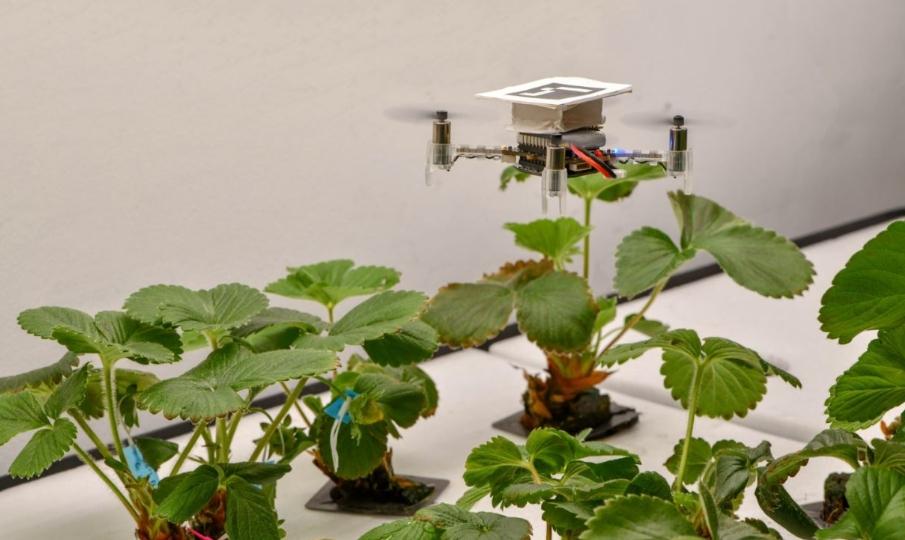Drones instead of bumblebees: an innovative method of pollination is being tested in Australia
Pollination in greenhouses around the world is usually done by bumblebees, but their use is banned in Australia. This means that the pollination process is carried out manually. The Singapore company Polybee took up the task of robotizing the artificial pollination method, and now tests are being carried out at the experimental sites of the University of Sydney, EastFruit experts report.
Miniature drones are used as a pollinator, the updraft from their propellers helps to carry pollen on garden strawberries. This year, Singaporean inventors have already tested this method of pollination in greenhouses in the UK. As it turned out, mini-drones are superior in efficiency to bumblebees, according to the NTD material.
“We achieved 50% higher results compared to bumblebee pollination,” says Siddharth Jadhav, founder of Singapore-based Polybee.
This study is funded by the Australian horticultural innovation company Hort Innovation.
“Pollination is a key management tool. It should be in the hands of the farmers. The research should help them do this more efficiently and rationally, as well as reduce production costs,” explains Brett Fifield, CEO of Hort Innovation.
Until these studies are completed, tomatoes, garden strawberries and other crops in greenhouses continue to be pollinated by hand.
“This is time-consuming. You need to pollinate during a certain flowering period. It’s very labor intensive,” says Patsavi Utaypanon, an associate at the University of Sydney.
During the tests, they also plan to use hover flies and local stingless bees (melipons) as pollinators.
In July 2022, EastFruit reported that Australian company Costa began working with Israeli company Arugga AI Farming to deploy robotic tomato pollination at its greenhouse in New South Wales. In practice, pollinator robots drive along the rows, find flowers ready for pollination using artificial intelligence, and send air pulses to make the flowers vibrate in a certain way, simulating pollination by bumblebees.
Also, in February 2021, EastFruit wrote about a robotic pollination system for almond orchards in Australia. An Israeli horticulture startup has signed a contract with one of Australia’s largest almond orchards to apply artificial pollination technology to almond trees. This technology is a mechanical pollen collection system and a robotic pollination system that doses the optimal amount of pollen to each flower. Collected pollen can be stored for up to a year.


Recent Comments